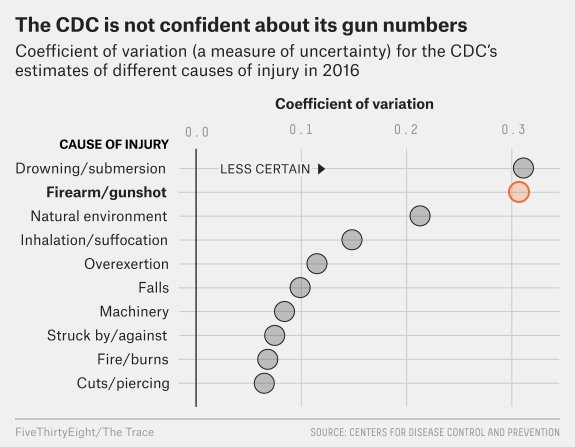My take on the new #omnibus bill, as it relates to #gunviolence:
1) The fixes to NICS (the background check system) are long overdue. I hope that they will be implemented well. theatlantic.com/politics/archi…
1) The fixes to NICS (the background check system) are long overdue. I hope that they will be implemented well. theatlantic.com/politics/archi…
2) I am glad that Congress clarified what CDC, NIH, and NIJ have long known: the "Dickey amendment" doesn't ban research per se. (Cf this article I wrote with @EmmyBetz & Wintemute 2 years ago: ncbi.nlm.nih.gov/pmc/articles/P…)
3) HOWEVER: this clarification does **nothing** to fix the lack of research. We need appropriations. Want to know more about why this clarification is meaningless (and may even be harmful)? Read here: npr.org/sections/healt…
4) One bright spot is increased funding for the National Violent Death Reporting System, which collects otherwise unknowable data on homicides and suicides in participating states. cdc.gov/violencepreven…
4b) Many of us in the field have been calling for expansion of NVDRS for years. We have a similar, more robust, system for car crashes ("FARS"), which has been hugely helpful in identifying and reducing risk factors for fatal car injuries.
4c) However the NVDRS is only as good as its data sources. The data sources (e.g., homicide reports from the police; medical examiner records) are often inadequate and/or delayed bc of ongoing investigations.
5) Another thing MISSING from the bill, is improved systems to track and identify patterns of #gun injury. I mentioned FARS above for car crashes. That's only 1 of many surveillance systems for car injuries. We need the same for guns. More here: theverge.com/2018/3/23/1715…
As #docs4gunsense (and nurses, social workers, public health researchers, etc) -- we need more & better. Our patients deserve better. This epidemic touches us all. The same tools should be able to be applied to #gun injury that we apply to EVERY OTHER disease and injury. / fin
cc @choo_ek @darakass @hshermd @drgenngeller @RohiniAshokMD @physicianwomen @JenniferBrokaw @shannonrwatts @KBFischer @RealCedricDark
• • •
Missing some Tweet in this thread? You can try to
force a refresh





